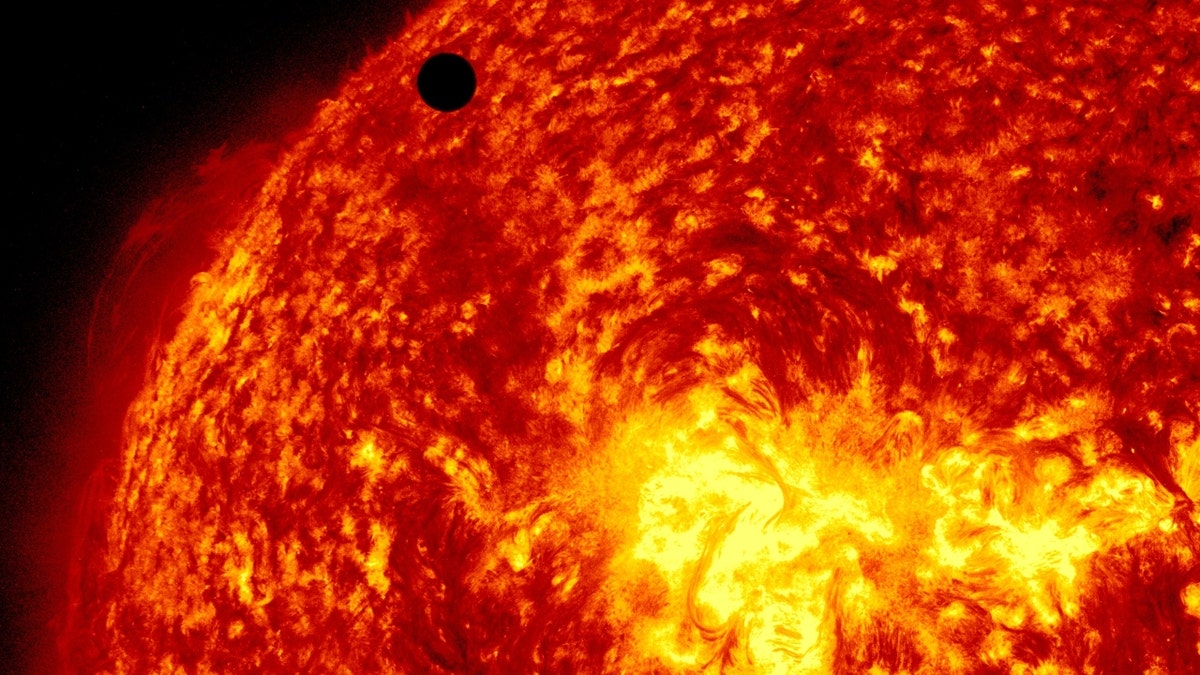NASA captures a ‘smiling’ sun
NASA shared a video taken by its Solar Dynamic Observatory showing dark patches on the sun, giving the illusion of a smile. (Credit: @NASASun / Twitter)
A team of international researchers has identified the highest-energy light ever observed from the sun.
According to a recent study published in the journal Physical Review Letters, scientists have discovered gamma rays from the sun that have an energy level of about 1 trillion electron volts, or one tera electron volt (TeV).
Gamma rays belong to the electromagnetic spectrum and are known to carry the highest energy of any other wavelength of light.
“The sun is more surprising than we expected,” said Mehr Un Nisa, a postdoctoral research associate at Michigan State University and the corresponding author of the study. “We thought we understood this star, but it turns out that’s not the case.”
WEBB SPACE TELESCOPE CAPTURES MYSTERIOUS ‘QUESTION MARK’ IN SHOT OF FORMING STARS

Michigan State University postdoctoral researcher Mehr Un Nisa at the High-Altitude Water Cherenkov Observatory. (Credit: Mehr Un Nisa)
Nisa conducted her research at the High-Altitude Water Cherenkov Observatory, located between two dormant volcano peaks in Mexico. The observatory played a crucial role in this groundbreaking discovery.
Although the high-energy light does not reach the surface of the Earth, Nisa and her team were able to detect the signatures created by gamma rays.
“Other ground-based telescopes in this specific energy range cannot observe the sun because they only operate at night,” Nisa explained. “Our observatory operates 24/7.”
Situated at an altitude of 13,000 feet, the observatory can observe the “air showers” produced when gamma rays collide with the air in the atmosphere.

A composite image shows a photograph of the High-Altitude Water Cherenkov Observatory in Mexico observing particles, whose paths are shown as red lines, generated by high-energy gamma rays from the sun. Michigan State University researchers were part of the team that observed those particles and gamma rays. (Credit: Mehr Un Nisa)
Air showers are invisible particle explosions caused by high-energy gamma rays. The energy of the rays is converted into lower energy particles and light, which are detected by the observatory as they travel downward through the atmosphere.
When these particles interact with water in the observatory’s tanks, they produce Cherenkov radiation that can be measured using the observatory’s instruments.
After six years of data collection, Nisa and her team observed an “excess of gamma rays” that exceeded their expectations.
NASA AI MODEL COULD HELP WORLD PREPARE FOR IMPACT OF SOLAR STORMS
“When we first saw the data, we thought we made a mistake. The sun couldn’t emit such bright gamma rays at these energies,” Nisa recalled.
The brightness and abundance of gamma rays observed were greater than anticipated.
Researchers had previously speculated that seeing gamma rays from the sun would be rare. However, NASA’s Fermi Gamma-ray Space Telescope mission revealed that there were about seven times more gamma rays than initially expected. It is worth noting that the telescope’s measurements of the sun’s gamma rays reached a maximum of around 200 billion electron volts.

In this handout image provided by NASA, the SDO satellite captures an ultra-high definition image of the Transit of Venus across the face of the sun June 5, 2012, from space. (DO/NASA via Getty Images)
Professors John Beacom and Annika Peter from Ohio State University encouraged the international collaboration at the observatory to investigate further.
“They suggested that we might be able to observe something significant since we were not seeing any cutoff in the data,” Nisa said.
CLICK HERE TO GET THE FOX NEWS APP
The team has now demonstrated for the first time that the energies of the sun’s gamma rays extend into the tera electron volts range, reaching almost 10 TeV, according to Nisa. However, this level appears to be the maximum energy observed.
Nisa added that solar scientists will now investigate how the sun’s gamma rays achieve such high energies and the role played by the sun’s magnetic fields.











